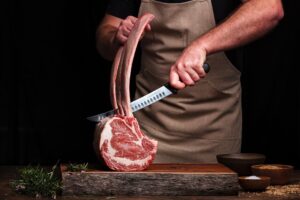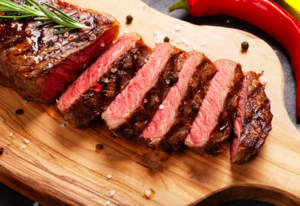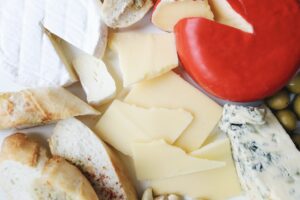Home-cooked food could be a simple enjoyment in daily life. You don’t have to sacrifice this joy for the sake of time. The solution? Slow cooking! Let’s dive in!
Table of Contents
What is Slow Cooking?
Slow cooking is a kind of low-temperature cooking. It offers an abundance of recipes that require minimal prep work; most of it can be done in under 30 minutes. Then, you simply add the ingredients to the slow cooker, step away, and let it handle the rest.
Slow cooker is a very convenient and useful electric appliance for everyone. It gradually cooks food over a prolonged period of time, usually between 6 and 10 hours. The crock pot is an increasingly popular type, and the principle behind it is relatively simple. It consists of two pieces: the stoneware pot, or “crock,” and the slow cooker base.
The food is placed inside the crock, which is then heated on the bottom and sides by a base that comes equipped with multiple heating settings. It’s best to keep the lid on the slow cooker while it’s active. It helps maintain an equal distribution of heat inside and guarantees that your food is cooked through completely.
7 Benefits of Slow Cooker Cooking
There are countless benefits to using a slow cooker, including, but not limited, to:
1. Cutting back on ordering take-out
With a meal already prepared and ready to eat at home, you’ll eliminate the temptation to order take-out on nights. Not only does this save you time and money, it’s a healthy alternative to most take-out food.
2. Tenderizing less expensive cuts of meat
Cooking meat at low temperatures for a prolonged period of time breaks down the muscle tissues. Slow cooking renders any cut of meat more tender in the long run.
3. Bringing out flavor
In addition to tenderizing meats, the long process of slow cooking carefully draws out the flavors of each ingredient. It makes an artistic balance of flavor profiles happen.
4. Minimizing prep time
As previously stated, most meal prep involved in slow cooking can be done in 30 minutes or less. This makes it a widely appealing option for anyone on a tight schedule. After half an hour of work in the kitchen, you’re free to go about your daily business and come home to a ready-to-eat meal.
5. Maximizing variety
In addition to being fast and convenient, slow cooking offers a wide variety of meal choices, from soups and stews to pasta dishes and even casseroles.
6. Controlling temperature and cooking options
Slow cookers come with a mixture of cooking options, allowing for the temperature range you need to create any number of dishes. You can control and adjust temperature as well as cooking time easily via the panel on the front of the slow cooker base.
7. Saving energy
Slow cookers use less electricity than ovens, and thus produce less heat, making for a comfortable and eco-friendly cooking environment.
Clearly, there are numerous upsides to switching to slow cooking, but at the heart of them is the basic need for ease and convenience in the kitchen.
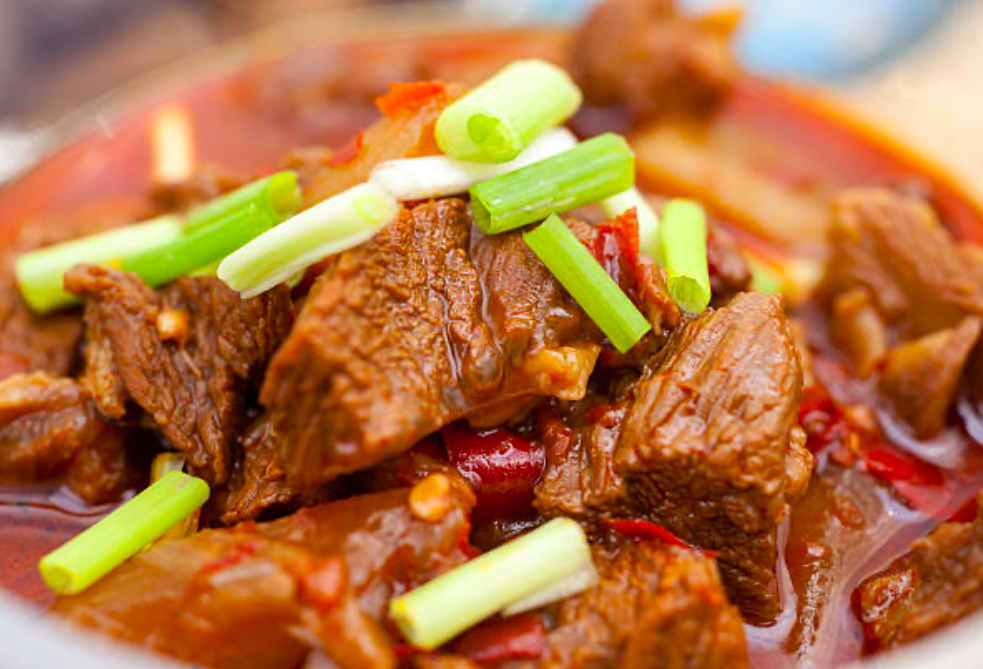
Food Safety Tips for Slow Cooking
1.Always thaw meat and poultry before slow cooking
According to The USDA Food Safety Guidelines, slow cookers heat up and gradually reach the established temperature, frozen meats may stay within the temperature range of 40 to 140 degrees Fahrenheit. It’s still low enough for bacteria to grow longer than is safe and comfortable in the realm of food preparation. Remember to defrost meat and poultry before putting it in your slow cooker.
2.Make sure that your slow cooker works properly
It’s imperative that your slow cooker is working properly, reaching the necessary temperatures to kill bacteria in raw meats.
In the event that you suspect your slow cooker may not be heating up correctly, there’s a simple method you can use to check its heating capabilities:
Fill the crock halfway with water and place the lid on, heat the water for 8 hours. It’s important not to remove the lid during this time, as it will release the heat circulating through the slow cooker and alter the resulting temperature.
After 8 hours, remove the lid and use an instant read thermometer to test the water temperature.
It should reach about 209°F. Any lower, and your slow cooker may be experiencing heating problems; any higher, and you’ll need to adjust the cooking temperature you use when working directly from a recipe.
3.Do not use “delay setting” of slow cooker
While most slow cookers come equipped with a “delay start” setting, it’s widely recommended that you avoid using this, if at all possible. This is suggested in the interest of safety. As ingredients such as meats run the risk of developing bacterial growth if left sitting out in the dormant slow cooker for an extended period of time.
4.Store your slow cooked food properly
As a general rule, you should refrigerate food sometime within the 2 hour period after it’s done cooking.
Choosing the Right Ingredients for Slow Cooking
As with any method and style of cooking, there are certain ingredients to embrace and avoid when you’re using a slow cooker.
What are the best foods to cook in a Slow Cooker?
In general, any tough or fatty meat that enters a slow cooker will emerge tender and moist due to the low heat and long cooking process. Therefore, when contemplating which cut to use, consider the following:
- beef (including steak)
- lamb chop
- lamb shank
- pork ribs
- pork shoulder
- chicken (including whole chicken & chicken breast)
- salmon
- potato
- much more!
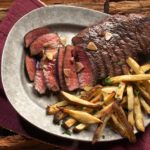

What should not be cooked in a Slow Cooker?
Predictably, some foods will fare better than others in the unique environment created during the process of slow cooking. If possible, try to avoid couscous. This tends to absorb too much liquid when cooked in a slow cooker, resulting in a saturated mush rather than the appealing dish you might’ve been hoping for.
Top 10 Slow Cookers in 2022 At a Glance
◈ Best Overall Slow Cooker: Cuisinart 3-In-1 Multi-Cooker
◈ Best Budget Slow Cooker: Hamilton Beach Portable 7-Quart Slow Cooker
◈ Best Slow Cooker for Large Family: KOOC 8.5-Quart Programmable Slow Cooker
◈ Best Multi-functional Cooker with Slow Cooking: Instant Pot Aura Pro Multi-Use Programmable Slow Cooker
◈ Most Versatile Vessel Slow Cooker: West Bend Large Capacity Versatility Slow Cooker
◈ Best Slow Cooker for Tailgates & Picnic: Presto Nomad 8-quart Traveling Slow Cooker
◈ Best Slow Cooker with Temperature probe: Hamilton Beach Slow Cooker With Temperature Probe
◈ Best Slow Cooker with Stirring System: Crock-pot Digital Slow Cooker with iStir Stirring System
◈ Best Triple Slow Cooker: Elite Platinum Triple Slow Cooker Buffet Server
◈ Best Disney Slow Cooker: Disney Mickey Mouse Oval Slow Cooker
► You may want to take a look at this post: How to choose a slow cooker?
10 Top Tips of Slow Cooking
Whether you’re new to slow cooking or an experienced home cook looking for some new tricks, here are 10 ways to make sure you’re getting the most out of your slow cooker.
1. Keep the lid closed
As tempting as it may be to sneak a peek and check in on your slow cooker’s progress, DON’T! Tis will release the heat that’s been building up and circulating throughout the crock during the entire cooking process. On average, each time the lid is lifted off the crock, another 15 to 20 minutes of cooking time is needed in order to cook the food completely. Additionally, try to avoid stirring. it’s not usually necessary with slow cookers, and may actually decrease the overall temperature of the food.
2. Be wary with wine and liquor
A splash of wine can do wonders to the flavor profile of many dishes. But you have to keep a cautious eye and a light hand when adding wine to a slow cooker dish. Because the cooker remains sealed throughout the cooking process, the alcohol can’t evaporate out of the wine like it would in an open skillet or pan. So a little goes a long way.
3. Brown beforehand
While it’s not necessary to brown meat ahead of time, doing so will undoubtedly boost the overall flavor of your dish. Sauteed vegetables and browned meats (especially ground meats) add a rich, caramelized flavor that you may otherwise find lacking in your dish.
4. Thaw before slow cooking
This goes back to the fact that bacteria can flourish in frozen meats that remain too long in the “danger zone” of 40 to 140 degrees Fahrenheit. Remember to thaw the frozen meats before slow cooking.
5. Be mindful of food placement
Some components of the dish are going to cook faster than others. When layering the ingredients in your crock, try to place slow-cooking root vegetables (such as carrots and potatoes) at the bottom of the crock to leave room for the meat to go on top. Finally, top with liquids such as water or broth.
6. Timing is key
In addition to placement, the time that you add food to the slow cooker will impact how well it cooks. Grains such as pastas and rice should be added near the end of the cooking process. If you add them in the beginning, you run the risk of having them turn out mushy in the final product. Dairies such as milk, cheese, and cream should also be added within the last hour of cooking in order to prevent them from curdling. For the same reason, you should add soft vegetables such as tomatoes only in the last 40 minutes of cooking.
7. Avoid overcrowding
It’s perfectly fine to cook roasts and whole chickens in your slow cooker, as long as the lid fits well on top and your crock is large enough to comfortably accommodate the roast or chicken in its entirety. In general, though, it’s a good idea to keep your slow cooker filled between the 1/2 and 2/3 mark.
8. Trim fat and remove chicken skin
This is the best way to avoid greasy, oily liquid accumulating in your crock (and in your food!).
9. Finish with a fresh seasoning
Fresh herbs and citrus zest or juice can cut through the richness of many slow cooker recipes and add a new sense of brightness to the flavor profile. For the best results, these should be added at the end.
10. Take care of your pot!
The inner pot of a slow cooker doesn’t actually require much maintenance to keep it in peak performing condition. Just bear in mind that never place your inner pot in the refrigerator prior to use in the heated base, as this may cause cracking. Additionally, use wooden or nylon serving utensils to avoid scratching the inside of the crock.
Conclusion
The ease and convenience of using a slow cooker make it ideal for anyone looking to save time and energy in the kitchen. From quick prep times to low-maintenance recipes, slow cookers are the perfect way to simplify meals without having to sacrifice their homemade comfort and rich flavor. Get one and try slow cooking right now!


